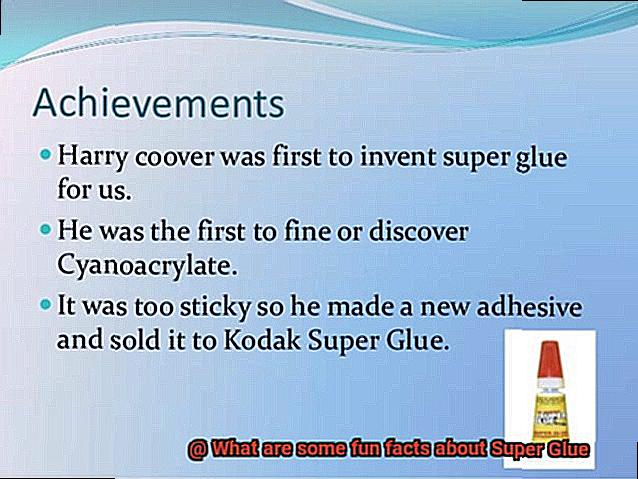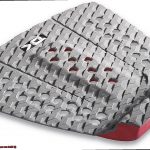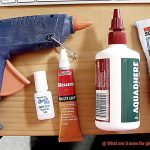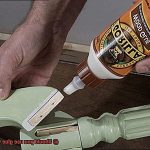Get ready to be glued to your screen with some mind-blowing facts about Super Glue.
This super-strong adhesive has been keeping things together since the 1940s, and it’s still going strong today. You may know it as cyanoacrylate adhesive, but its superhero name is Super Glue for a reason.
Believe it or not, this sticky savior was actually invented to seal wounds during World War II. Talk about a versatile invention.
But that’s just the tip of the glue iceberg. Get ready for some seriously fascinating and fun facts about Super Glue that will blow your mind and stick with you long after you’ve finished reading.
So hold onto your hats (or should I say glue bottles) because we’re about to dive into the captivating world of this adhesive wonder.
History of Super Glue
Contents
In the world of adhesives, one product stands out for its incredible bonding strength, fast-drying properties, and versatile applications – Super Glue. This adhesive marvel has a fascinating history that begins with an accidental discovery and continues to evolve with modern variations. Join us on a journey through time as we explore the captivating history of Super Glue and its remarkable influence.
Accidental Discovery:
Super Glue owes its existence to Dr. Harry Coover Jr., a brilliant scientist working for the Eastman Kodak Company during World War II. In his pursuit of developing a clear plastic for gun sights, he stumbled upon a substance that was excessively sticky. Despite being set aside initially, this accidental discovery laid the foundation for what would become one of the most popular adhesives in the world.
From Plastic to Glue:

It took nine years for Dr. Coover and his team to realize the true potential of their accidental invention. In 1958, they introduced the first commercial version of Super Glue, known as “Eastman #910.” Its unparalleled bonding strength and rapid-drying nature quickly captured the attention of consumers worldwide.
The Space-Age Glue:
Super Glue’s popularity skyrocketed during the space race between the United States and the Soviet Union. Astronauts relied on this adhesive wonder to repair equipment in space, earning it the nickname “space-age glue.” Its ability to bond surfaces almost instantly was a game-changer in zero-gravity environments.
Medical Marvel:
Super Glue found its way into medical procedures as well. Its fast-curing properties made it an ideal solution for sealing wounds quickly and effectively. In emergency situations where traditional sutures were not available, medical professionals turned to Super Glue as a temporary alternative.
Fascinating Facts:
Here are some intriguing facts about Super Glue that highlight its versatility:
Super Glue can bond materials ranging from metal and plastic to rubber and ceramics. Its versatility makes it a go-to adhesive for various DIY projects and repairs.
Once fully cured, Super Glue can withstand extreme temperatures, ranging from -40°F to 180°F (-40°C to 82°C). It is a reliable choice for both indoor and outdoor applications.
Super Glue has the unique ability to stick to skin almost instantly. While this can be useful for closing small cuts or wounds in emergency situations, caution must be exercised to avoid accidental contact with skin or eyes.
Some artists have embraced Super Glue as a medium for their artwork. Its fast-drying nature allows for intricate and detailed creations.
Modern Variations:
In recent years, manufacturers have introduced specialized variations of Super Glue to cater to specific needs. Gel formulas offer greater control and reduce the risk of runny applications. Specialized versions are designed for specific materials like plastic, metal, or wood, ensuring optimal bonding strength for each application.
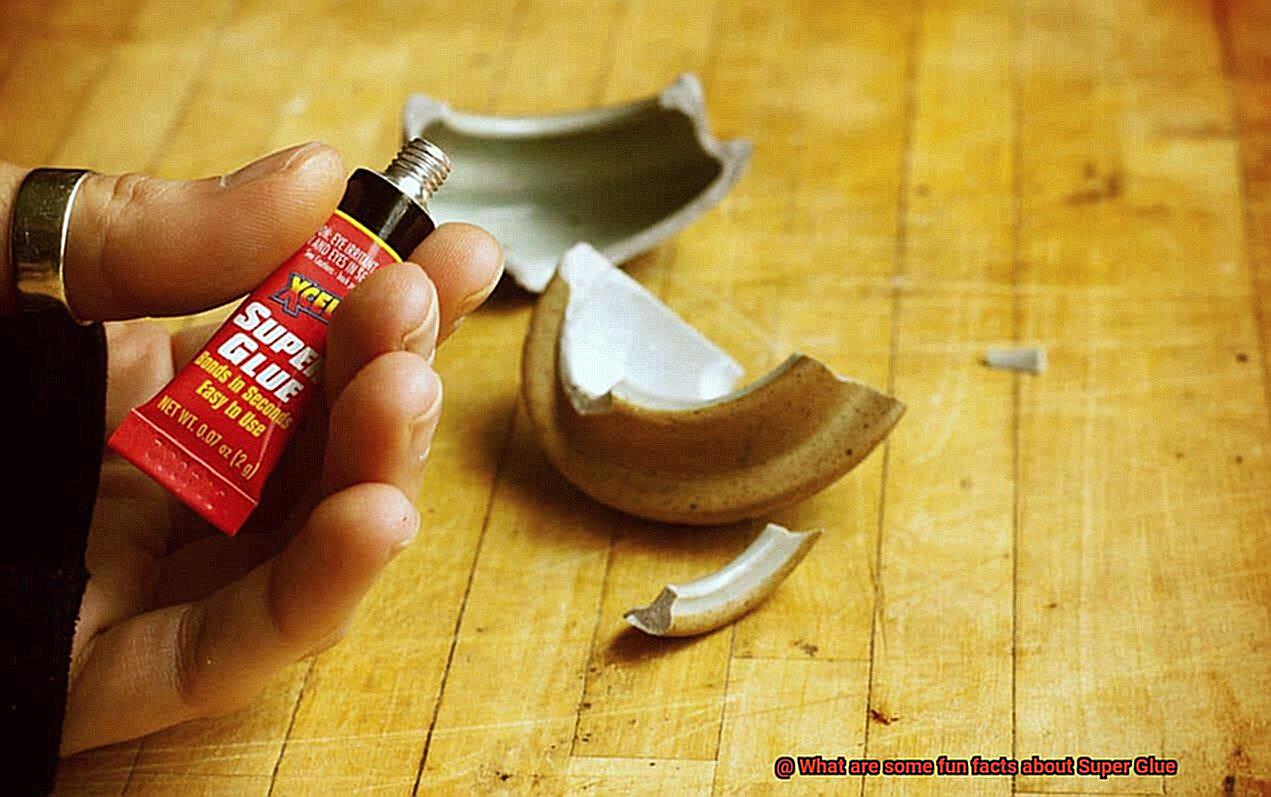
Instant Bonding Power of Super Glue
Super Glue, also known as cyanoacrylate adhesive, is renowned for its unparalleled instant bonding power. In a matter of seconds, this fast-acting adhesive can create strong and durable bonds that withstand the test of time. The secret lies in its main ingredient, cyanoacrylate, which undergoes a rapid chemical reaction upon contact with moisture. This reaction causes the adhesive to polymerize and harden, forming an unbreakable bond between the materials being glued together.
Understanding the instant bonding power of Super Glue involves delving into several key points:
- The Science Behind It: When Super Glue comes into contact with moisture, such as ambient humidity or the natural moisture on surfaces, a remarkable chemical reaction occurs. This reaction triggers the cyanoacrylate to rapidly polymerize, transforming from a liquid state into a solid adhesive that binds surfaces together with incredible strength.
- Versatile Applications: The instant bonding power of Super Glue makes it suitable for a wide range of materials. This adhesive works wonders on metal, plastic, rubber, ceramic, and even wood. Whether you need to fix broken items, repair household objects, or embark on intricate crafting projects, Super Glue is the go-to adhesive for immediate adhesion.
- Surface Preparation: To ensure optimal bonding strength, proper surface preparation is crucial. Cleaning and drying the surfaces before applying Super Glue is essential. Any presence of dust, dirt, or oils can impede the bonding process and compromise the adhesive’s effectiveness.
- Thin Application: Less is more when it comes to Super Glue application. A thin layer of glue is usually sufficient for most bonding applications. Overapplication can result in excess adhesive squeezing out and potentially weakening the bond.
- Quick Setting Time: Waiting hours for glue to dry is a thing of the past with Super Glue. Once applied, it sets quickly, allowing you to move forward with your project without delay. While it reaches its maximum strength within a few hours, the bond may take up to 24 hours to fully cure and achieve ultimate strength.
- Strength and Durability: Super Glue bonds are renowned for their incredible strength and resistance to impacts. However, it’s important to note that over time, these bonds may become brittle. Therefore, it is crucial to consider the specific requirements of your project and select the appropriate adhesive accordingly.

Versatility of Super Glue
Prepare to be amazed by the extraordinary versatility of Super Glue, the ultimate adhesive superhero that has captured the hearts of DIYers, artists, craftsmen, and professionals worldwide. With its unparalleled bonding power and a wide range of applications, Super Glue has become an essential tool for any project. Join me on this captivating journey as we delve into the depths of its versatility and discover how it can transform your projects from ordinary to extraordinary.
A Bonding Powerhouse:
Super Glue’s claim to fame lies in its astonishing ability to bond almost any material together. Whether it’s metal, plastic, rubber, wood, leather, or ceramics, this adhesive creates an unbreakable bond that can withstand immense pressure and tension. No matter what project you have in mind, Super Glue is there to ensure a secure and long-lasting hold.
Endless Applications:
Super Glue’s versatility extends far beyond traditional uses. In the medical field, it has revolutionized wound closure by acting as a surgical adhesive, allowing for quick and effective healing. It can also revive your favorite broken jewelry or effortlessly reattach the soles of your shoes. The possibilities are endless with this adhesive superhero.
Compatibility with All Surfaces:
Unlike many other adhesives, Super Glue effortlessly bonds both porous and non-porous materials. From smooth surfaces like glass or ceramics to absorbent materials like fabric or paper, this adhesive adapts to any surface with ease. This adaptability makes it the perfect choice for a vast array of projects.
Lightning-Fast Drying Time:
Waiting for glue to dry is a thing of the past when it comes to Super Glue. With its lightning-fast drying time, you can say goodbye to tedious waiting periods and hello to instant results. Within seconds, your projects are ready to be admired, showcasing the efficiency of this adhesive superhero.
Unyielding Against Extreme Temperatures:
Super Glue’s resilience shines through in its ability to withstand extreme temperatures. From freezing cold to scorching heat, this adhesive remains steadfast and reliable. No matter the environment, Super Glue will never let you down.
Defying Water’s Challenge:
Super Glue fearlessly defies water, making it the perfect companion for outdoor projects or areas prone to moisture. With its exceptional water resistance, you can confidently utilize it in humid environments without compromising the bond. Your projects will stand strong against the elements.
Heat Resistance of Super Glue
Prepare to be captivated as we embark on a journey into the extraordinary world of Super Glue and its remarkable ability to withstand scorching temperatures. Whether you’re an avid DIY enthusiast or simply curious about the secrets behind everyday tools, this article will unveil the heat resistance of Super Glue and explore the factors that can impact its performance.
Exploring the Heat Resistance:
Renowned for its exceptional bond strength and rapid drying properties, Super Glue, also known as cyanoacrylate adhesive, possesses an impressive heat resistance. Generally, it can withstand temperatures up to an astonishing 180 degrees Celsius (356 degrees Fahrenheit), making it a reliable choice for most projects that involve moderate heat challenges.
Factors that Influence Performance:
It’s important to note that the heat resistance of Super Glue can vary based on brand and formulation. In addition, the type of surface it is applied to and the duration of exposure play crucial roles in determining its performance. For example, applying Super Glue to a heat-resistant material will yield superior results compared to using it on a metal surface subjected to prolonged high heat.
Specialty Super Glues:
In certain cases, specialized super glues are available that offer enhanced heat resistance. These variants are specifically formulated to withstand higher temperatures, making them ideal for applications where regular super glue might fall short. With these specialty options, you can confidently tackle projects that involve elevated temperature environments.
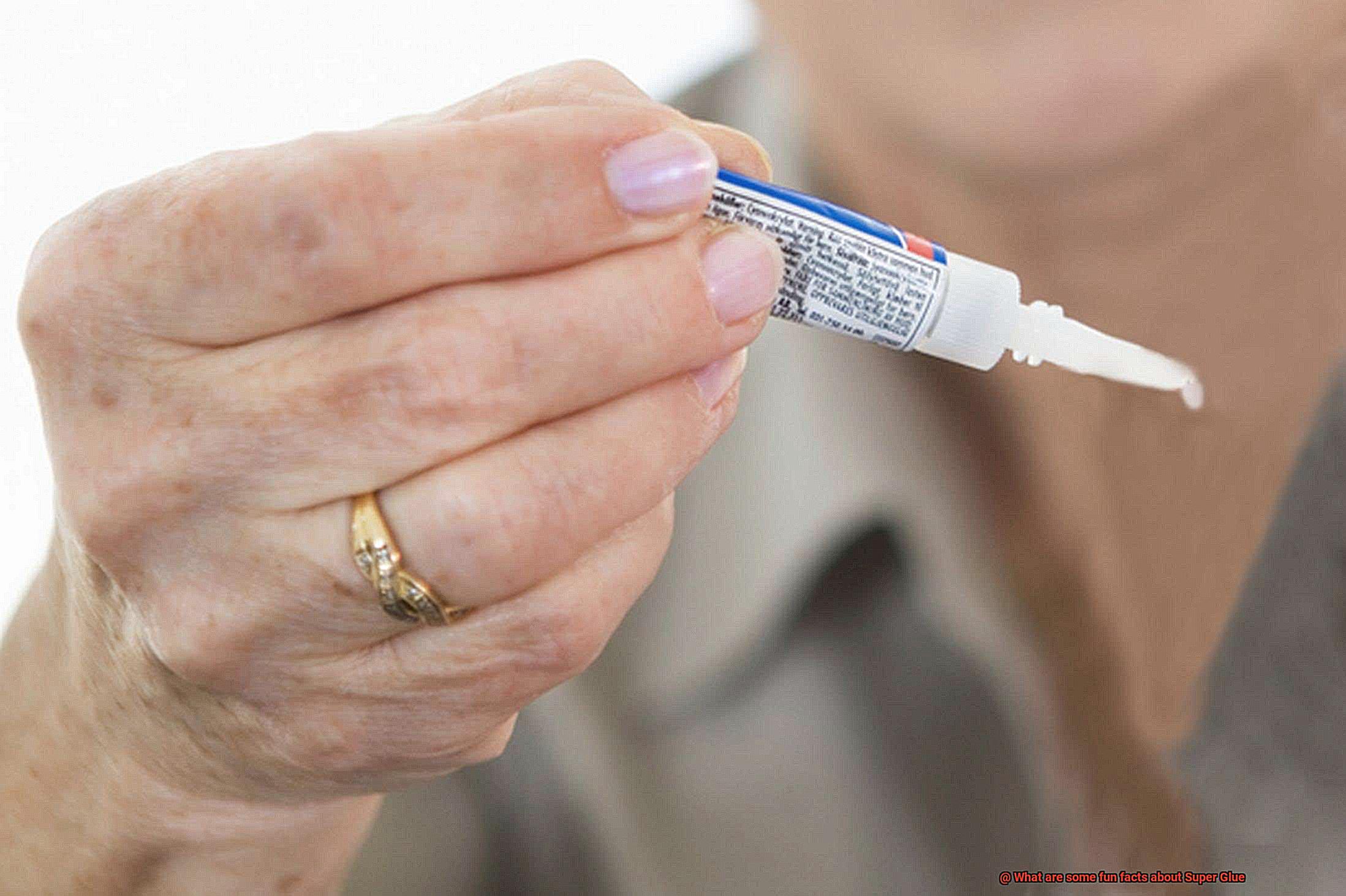
Precautions and Recommendations:
While Super Glue exhibits outstanding heat resistance capabilities, it’s important to remember that it is not designed for extreme temperature environments. If your project requires adhesive for high-temperature applications, it is advisable to explore specialized adhesives tailored to such conditions. Additionally, proper ventilation should be ensured when using super glue in hot environments, and necessary safety precautions like wearing protective gloves and eye goggles should be taken.
Materials Not Suitable for Super Glue
Today, we embark on a journey into the hidden depths of Super Glue, exposing its weaknesses and uncovering the materials that defy its adhesive powers. Grab your magnifying glass as we delve into the world of materials not suitable for bonding with Super Glue.
Polyethylene and Polypropylene:
Our first adversaries are none other than polyethylene and polypropylene, the plastic champions found in everyday items like plastic bags and containers. With their low surface energy, these plastics repel adhesives, including the mighty Super Glue. So, if you’re aiming to mend that torn plastic bag or fuse polypropylene parts together, you’ll need to seek an alternative adhesive solution.
Teflon – The Slippery Nemesis:
Teflon, the nonstick material we adore in our cookware, poses a formidable challenge to Super Glue. Its incredibly low surface energy and chemical inertness cause Teflon to laugh in the face of any adhesive attempting to bond with it. Alas, when it comes to repairing Teflon, specialized adhesives designed specifically for this slippery villain must be sought.
Rubber – Defying Bonding Expectations:
Certain rubbers, such as silicone rubber and fluorosilicone rubber, have an uncanny ability to defy Super Glue’s adhesive powers. Their high chemical resistance and flexibility make it difficult for the glue to form a lasting bond. If you find yourself working with these rubber materials, exploring alternative adhesives better equipped to handle their unique properties is essential.
Foam Materials – A Delicate Balancing Act:
Foam materials can be finicky when it comes to bonding with Super Glue. Expanded polystyrene (EPS) foam and polyurethane foam, in particular, can be damaged or weakened by the adhesive. To avoid a foamy fiasco, opt for adhesives specifically formulated for foam materials or seek advice from experts in the field.
Challenging Metals – A Battle of Oxides:
While Super Glue possesses a knack for bonding with metals, certain types like aluminum and brass can pose challenges. These metals often develop an oxide layer on their surface that inhibits adhesion. To overcome this hurdle, roughening the surface or applying a metal primer before using Super Glue may save the day.
Potential Hazards of Using Super Glue
Super glue, also known as cyanoacrylate adhesive, is a remarkable adhesive that can bond materials together with astonishing strength and speed. However, like any powerful tool, it comes with its own set of hazards. To ensure your safety, it’s essential to understand these potential dangers before embarking on your next DIY project.
- Skin and eye contact: While super glue is excellent for sticking things together, it can be a nightmare if it accidentally comes into contact with your skin or eyes. The glue can cause irritation, burning sensations, and even allergic reactions in some individuals. Removing the glue from your skin without causing further damage can be challenging. If super glue gets in your eyes, it can cause severe irritation, redness, and vision problems. Seek immediate medical attention if this unfortunate mishap occurs.
- Fumes: During the curing process, super glue emits fumes that can irritate the respiratory system if inhaled in large quantities or over prolonged periods. To minimize exposure, use super glue in a well-ventilated area.
- Ingestion: Accidental ingestion of super glue is a serious concern. Swallowing the glue can cause irritation and blockage in your digestive system. If this happens, seek medical help without delay.
- Children and pets: Keep super glue out of reach of children and pets, as they may accidentally ingest it or misuse it, leading to serious health risks.
- Allergies and sensitivities: Some people may have allergies or sensitivities to the chemicals present in super glue. Before using it extensively, perform a patch test on a small area of skin to check for any adverse reactions.
Unconventional Uses for Super Glue
Super glue, the superhero of adhesives, possesses mind-blowing strength and lightning-fast bonding abilities. But this mighty adhesive has some surprising and unconventional uses that go beyond simple repairs. It’s time to delve into the world of unconventional uses for super glue and discover its hidden potential.
- Fixing Ceramics: Have a cracked mug or chipped vase? Super glue can work wonders. With its strong bond that can withstand daily use and washing, it can give your cherished ceramics a new lease on life.
- Crafting Jewelry: Super glue is a must-have for jewelry makers. It effortlessly bonds different materials like metal, glass, and beads together, allowing you to create unique and stunning accessories that reflect your personal style.
- Repairing Eyeglasses: Don’t let a loose screw or broken frame ruin your day. A small amount of super glue can provide a temporary fix until you can get your glasses professionally repaired, keeping you stylish and seeing clearly.
- Healing Paper Cuts: Ouch. We’ve all experienced the pain of a paper cut. But fear not, super glue can come to the rescue. By applying a small amount to the cut, you can seal it and prevent further irritation or infection, healing your wounds in an instant.
- Preventing Fraying: Tired of frayed edges on your fabrics? Dab a bit of super glue on the frayed area to secure the threads and prevent them from unraveling, preserving the integrity of your favorite garments.
- Zipper Lubrication: Say goodbye to stubborn zippers. Applying a small amount of super glue to the teeth of the zipper can help lubricate it and make it easier to slide up and down, saving you from the frustration of stuck zippers.
- Chair Leg Stability: Don’t let a wobbly chair ruin your dinner party. Apply some super glue to the joint where the leg connects to the chair and hold it in place until the glue sets. This temporary fix adds stability until you can make more permanent repairs, ensuring a comfortable and secure seating experience for your guests.
- Temporary Windshield Fix: Got a small crack or chip in your car windshield? Super glue can provide a temporary solution until you can get professional help. However, for larger cracks or damage that affects visibility, it’s best to seek professional assistance to ensure your safety on the road.
- DIY Plastic Projects: If you enjoy DIY projects, super glue is a valuable tool for creating and repairing items made of plastic. It securely bonds plastic pieces together, allowing you to build or fix various objects with ease, unleashing your creativity.
- 10. Extra-Secure Envelopes: Need to seal an envelope or package with extra security? Applying a thin layer of super glue along the edges can help ensure that it stays sealed during transit, providing peace of mind that your important documents or gifts will arrive intact.

Use in the Art and Crafts World
In today’s world, art and crafts are not just a hobby or pastime; they have become an integral part of our lives. From home decor to fashion, the use of art and crafts has permeated every aspect of our existence. Let’s explore the diverse ways in which art and crafts are utilized in the world today.
- Home Decor: Art and crafts play a crucial role in transforming houses into homes. Handcrafted wall hangings, paintings, sculptures, and personalized decorative items add a unique touch to living spaces. From DIY projects to commissioned pieces, art and crafts allow individuals to express their creativity and create an environment that reflects their personality.
- Fashion and Accessories: The fashion industry has embraced the beauty of handmade creations. Designers incorporate various craft techniques like embroidery, beading, weaving, and tie-dyeing into their collections. Artisans from around the world contribute to sustainable fashion by creating one-of-a-kind pieces using traditional methods. Handmade accessories such as jewelry, handbags, and shoes celebrate the craftsmanship and individuality of the maker.
- Upcycling and Repurposing: In today’s environmentally conscious society, art and crafts play a vital role in reducing waste and promoting sustainability. Artists and crafters repurpose old materials into new creations, breathing new life into discarded objects. Upcycled furniture, recycled paper art, and clothing made from repurposed textiles are just a few examples of how art and crafts can contribute to a greener world.
- Therapy and Well-being: Art therapy has gained recognition for its therapeutic benefits in promoting mental health and well-being. Engaging in art and crafts activities helps individuals relax, reduce stress, and improve cognitive functions. Painting, drawing, knitting, and other creative pursuits provide an outlet for self-expression, fostering emotional healing and personal growth.
- Community Engagement: Art and crafts bring people together by encouraging collaboration and community engagement. Public art installations, community murals, and craft fairs create spaces for individuals to connect, share ideas, and appreciate each other’s creativity. Art and crafts workshops and classes provide opportunities for skill-sharing and learning, promoting cultural exchange and inclusivity.
- Education and Skill Development: Art and crafts education play a vital role in honing creativity, problem-solving skills, and critical thinking. Schools and educational institutions recognize the importance of arts in fostering well-rounded individuals. Art classes teach students various techniques, allowing them to explore their creativity and develop their artistic abilities.
- Marketing and Branding: Art and crafts have found their place in marketing and branding strategies. Companies use handmade elements in packaging, product design, and advertising campaigns to convey authenticity and uniqueness. Craft-inspired branding appeals to consumers who value craftsmanship and artistry.
Conclusion
Super Glue is not just your average adhesive.
It has some fascinating fun facts that will blow your mind. Did you know that Super Glue was accidentally discovered by Dr. Harry Coover while he was trying to create clear plastic gun sights for World War II?
Talk about a happy accident. Another interesting fact is that Super Glue can bond almost anything together, from plastic to metal to ceramics.
It’s like a magical glue that can fix almost anything. But here’s the kicker – did you know that Super Glue was initially rejected by manufacturers because they didn’t think there would be a market for it?
Thankfully, Dr. Coover persisted and now we have this incredible adhesive at our disposal.

